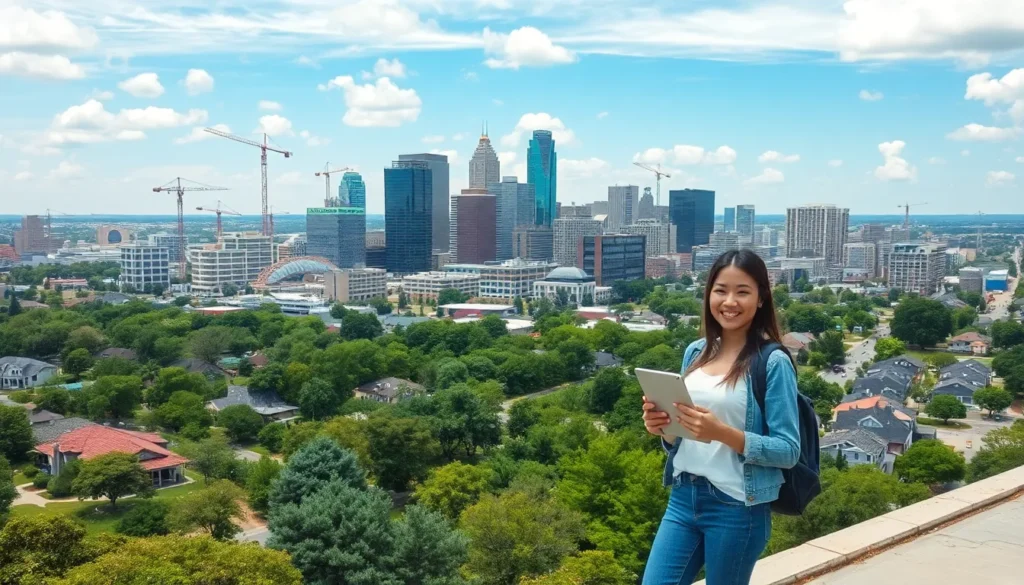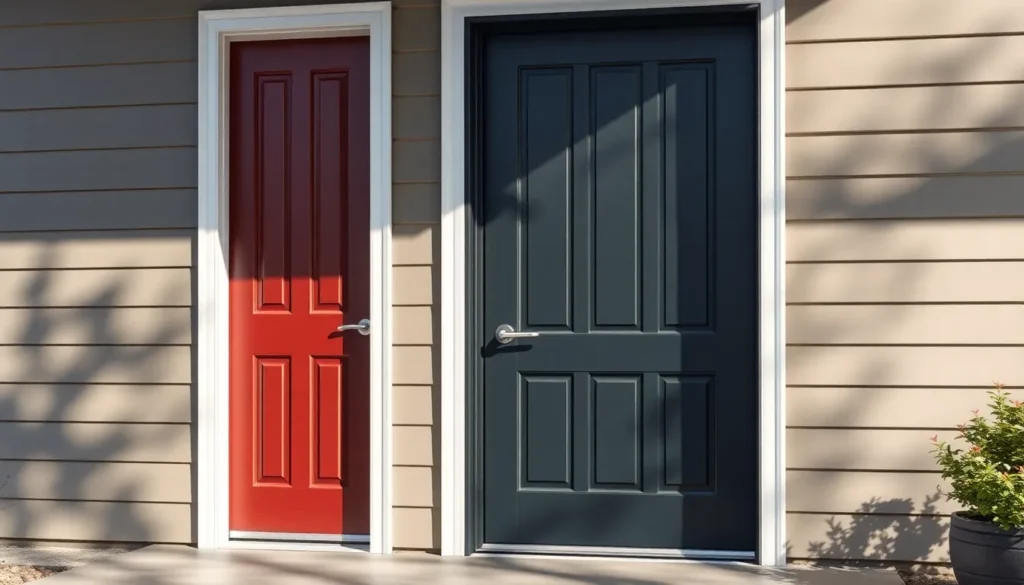Texas real estate is hotter than a jalapeño in July, and keeping up with the latest news is essential for anyone looking to buy, sell, or just daydream about their next big investment. With the Lone Star State’s booming economy and population explosion, the market is a wild ride full of opportunities and unexpected twists.
Overview Of Texas Real Estate Market
Texas boasts a dynamic real estate market characterized by rapid growth and opportunity. Understanding the current trends and future predictions is vital for stakeholders in this thriving sector.
Current Trends
Strong demand defines the Texas real estate landscape. Home sales reached 392,000 units in 2023, reflecting a 5% increase compared to 2022. Urban areas like Austin and Dallas show significant appreciation in property values, while suburban regions also attract buyers seeking affordability. Multifamily units gain popularity, addressing the needs of a growing population and shifting preferences. Additionally, remote work influences housing choices, with more individuals seeking residences outside traditional urban centers.
Market Predictions
Experts project continued growth in the Texas real estate market. By 2024, home prices may rise 6% due to persistent demand and limited inventory. The state’s robust job market contributes to this forecast, with various industries expanding rapidly. Interest rates are predicted to stabilize, providing some relief for buyers. Furthermore, investment in infrastructure and amenities enhances desirability in several regions. Such factors combined indicate that Texas will maintain its status as an attractive destination for homebuyers and investors alike.
Key Regions In Texas Real Estate

Texas features several key regions driving its dynamic real estate market. Each area showcases unique characteristics, attracting diverse buyers and investors.
Austin
Austin stands out due to its booming tech industry and vibrant culture. Home sales reached notable figures, significantly boosting property values. The city recorded property appreciation rates above 10% in some neighborhoods. Investors focus on multifamily units, meeting high rental demand. This increased interest coincides with a growing population, expanding the market further. Affordability remains an essential consideration for many seeking homes in surrounding suburbs.
Dallas
Dallas offers a mix of urban living and suburban accessibility. The city’s real estate market reflects strong demand, with approximately 100,000 homes sold in 2023. Significant corporate relocations reinforce economic growth and attract professionals. Property values in urban areas see rapid appreciation, while suburban neighborhoods provide budget-friendly options. Multifamily properties gain popularity as remote work reshapes living preferences. Continued infrastructure improvements enhance Dallas’ appeal for homebuyers and investors alike.
Houston
Houston showcases a diverse real estate landscape characterized by robust market activity. The city reported home sales of over 90,000 units in 2023, illustrating strong buyer interest. Rapid development attracts newcomers seeking job opportunities and affordable housing. Investors target multifamily developments amidst population growth, with vacancy rates remaining low. Properties in emerging neighborhoods often provide excellent investment potential, as ongoing projects enhance local amenities. A stable energy sector further supports Houston’s real estate market, solidifying its position as an attractive destination.
Notable Developments And Projects
Texas’s real estate market continues to evolve with significant projects across various sectors. These developments highlight the vibrant growth and ongoing demand in the region.
Residential Developments
Residential projects are on the rise throughout Texas, driven by increasing population and evolving buyer preferences. New single-family homes are being constructed in suburban areas as families seek affordability and space. In cities like Austin and Dallas, multifamily units are becoming increasingly popular, reflecting changing lifestyles and remote work trends. The demand for townhome communities also sees growth, offering low-maintenance living options. Some neighborhoods report property value increases exceeding 10%, emphasizing the appeal of these developments.
Commercial Projects
Commercial real estate ventures play a crucial role in Texas’s economic landscape. Significant investment in office spaces, retail centers, and mixed-use developments characterizes urban areas. Dallas leads with numerous corporate relocations driving demand for office space, resulting in a surge of new commercial buildings. Houston’s revitalized downtown attracts both locals and visitors, enhancing the economic environment. In Austin, tech-driven developments are reshaping traditional office spaces, fostering collaboration and innovation. Commercial developments reflect Texas’s strong job market and sustained growth, appealing to investors and businesses alike.
Challenges Facing The Texas Real Estate Market
The Texas real estate market faces significant challenges that impact both buyers and sellers.
Affordability Issues
Affordability continues to be a pressing concern in major Texas cities. Recent statistics reveal that home prices surged about 6% in 2024, exacerbating difficulties for first-time buyers. Urban areas like Austin and Dallas, known for their vibrant cultures, experience the sharpest price increases, making it tough for many to enter the market. Suburban regions attract buyers seeking more affordable options, but inventory shortages remain a challenge. Furthermore, increasing property taxes add financial strain, compelling potential homeowners to look elsewhere.
Natural Disasters
Natural disasters pose a substantial risk to the Texas real estate market. Hurricanes and severe storms frequently affect coastal properties, driving up insurance costs and complicating transactions. Recent events highlight the vulnerability of certain regions, spurring fears among potential buyers. Additionally, properties without adequate disaster preparedness often linger on the market longer. Homeowners face renovation costs after natural disasters, further impacting property values. As awareness of climate change grows, its impact on real estate decisions becomes increasingly significant.
Texas continues to emerge as a powerhouse in the real estate market. With strong economic fundamentals and a growing population driving demand, the landscape is evolving rapidly. Urban centers like Austin and Dallas are experiencing remarkable appreciation, while suburban areas offer affordability for many buyers.
As challenges such as rising home prices and natural disasters persist, staying informed is crucial for anyone looking to navigate this dynamic market. The ongoing developments and investment in infrastructure further enhance Texas’s appeal, making it a prime destination for both homebuyers and investors. The future looks promising, with opportunities abound for those willing to adapt to the changing environment.













